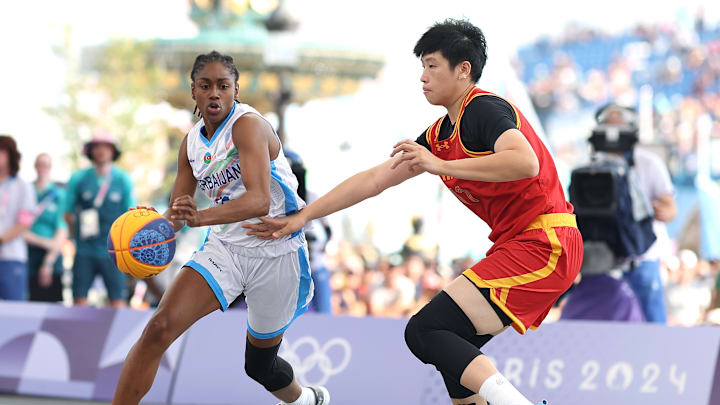Up until very recently, the end of the WNBA offseason was met with announcement after announcement as players indicated which overseas teams they would play with between October and March. In fact, most of your favorite athletes had or have regular stints overseas: Diana Taurasi and Sue Bird were in Russia together and Kamilla Cardoso and Tiffany Hayes both suited up in China this year.
There are a few reasons so many WNBA players have historically played overseas during the offseason, and the biggest motivator is obvious: money. While not every athlete playing overseas is making hundreds of thousands or even millions of dollars, the WNBA's top talent can command impressive rates around the world — and that money has help to supplement WNBA salaries that are still woefully lacking.
The introduction of AU Pro Basketball in 2022 and Unrivaled in 2025 ushered in a new era of women's basketball that meant more American athletes could stay in the U.S. during the offseason, a welcome change for players who have families (or who just don't want to be in another country for months on end).
Why WNBA players play overseas in the offseason
As many fans well know by this point, WNBA salaries are a fraction of their NBA counterparts. That's why you won't see an NBA rookie going overseas during the offseason — instead, he can use his down months to be with his loved ones, to work on his body and rehabilitate, and to recover from months of playing the best basketball in the world.
Unlike the WNBA, overseas teams are not limited by cap space — so if a team has the money, they can offer it to elite talent (it's worth noting that teams are not allowed to bring on more than two American players). While that money might be funded and sourced in different ways, the fact of the matter is that for most of the league's existence, too many players have needed an overseas option once the WNBA season ends.
Overseas teams are owned by a variety of people
There is no uniformity when it comes to overseas hoops, which makes sense considering the sheel volume of countries that boast professional basketball teams. All owners are not created equal, as Taurasi and Bird explained on the "30 for 30" podcast. During the conversation Taurasi revealed she made $45,000 a season early in her career, and fan enthusiasm for the WNBA had waned following the league's launch.
Bird added that she was offered $200,000 to play one season in Russia, something she said was "obviously worth it." She planned to walk away after one season, but then her team recruited Taurasi, her good friend and former UConn teammate. The pair's coach was "terrible" they said, but the co-owner of their team Shabtai von Kalmanovich proved to be an even more interesting character.
"We get in a random car, we drive into the center ofMoscow where his office is. Just you know communist building bigol ugly thing from the outside walking up these big old just MarbleSlab stairs and then you know, they open these double doors," Taurasi said. "And the minute you walk into his office, you’re just like this is just a weird place already. Like, we’re talking like walruses’ penises there, all kinds of Torahs everywhere. So we sat down."
Shabtai soon worked out a system where Taurasi could get an Italian passport and Bird an Israeli one, which would allow the Russian team to bring in more Americans.
Expenses are overall lower
In general, WNBA athletes also find that their overall expenses are a lot lower when they play overseas, especially as many contracts include housing, transportation, and even sometimes meals. That combined with the fact that athletes don't have to harbor loyalty to their overseas team (may the best bidder win) makes it a little easier for a WNBA player to spend the offseason elsewhere.
